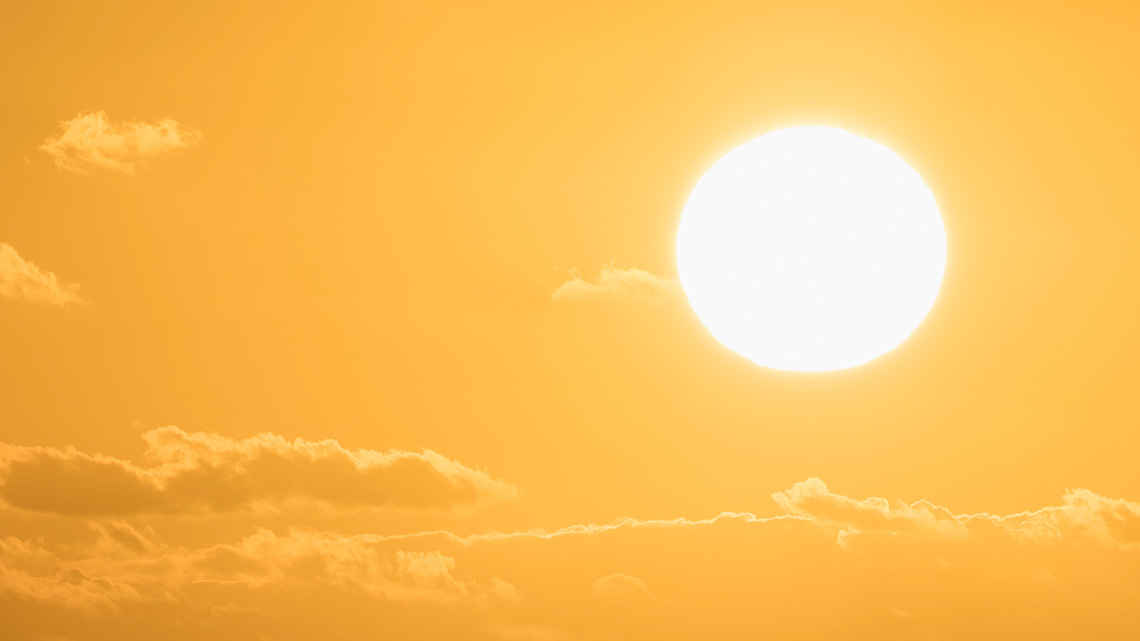Minds On
Bright ideas

A student has made a graph showing how much electricity is used for lighting their home across the four seasons: Spring, Summer, Fall, and Winter.
Pause Reflect
Pause and reflect
As you explore the graph, think about these questions. Work with a partner if possible!
- What do you notice?
- What do you think?
- What do you wonder?
Record your observations, questions, and ideas in the format of your choice
Graph – Electricity use

Graph indicating electricity used for lighting a home in each of the four seasons. Units of electricity are indicated by lightbulbs. Winter: seven lightbulbs, spring: four lightbulbs, summer: two lightbulbs, fall: four lightbulbs
Test your understanding!
Compare the amount of electricity used for lighting the home across the seasons.
- When does the home use the most electricity?
- When does the home use the least electricity?
- Which two seasons show the same amount of electricity being used?
Press ‘Answer’ to access the answers to the above questions.
- The home uses the most electricity in the winter.
- The home uses the least electricity in the summer.
- The home uses the same amount of electricity in the fall and spring.
Action
Seasonal sunlight

The graph shows that people use less lighting in the summer, and more in winter. Why do we need more lighting in the winter months?
To get some clues, explore this video about the changes that happen in the seasons.
What did Kenny G sing about the longest night of the year? What season was that in?
For another clue, try this activity!
Choose the word that completes each sentence.
Now back to the question: Why do we need more lighting in the winter months?
Record your answer in any format of your choice.
Press ‘Answer’ to check why we need more lighting in winter.
In the winter months, there are many more hours of darkness, so people may use their lights more. This uses up more energy.
Understanding the Sun
Every day, the sun rises in the sky. During the day, there is light.
Every night, the sun sets in the sky. During the night, there is darkness.
There are changes with the sun when the seasons change. The sun rises and sets at different times of the day. This changes how much light there is each season.
The sun also rises higher into the sky in different seasons. This changes how hot the air gets.
To learn more, explore the sun rising and setting in the different seasons.

What did you notice about the Sun in each of the seasons?
What was the same? What was different?
Record your answers on the computer, on paper, or share with a partner, if possible.
Press ‘Answer’ to access the differences of the Sun in the seasons.
The Sun rises higher in the sky in the summer. This makes the air hot.
The Sun rises lower in the sky in the winter. The air is not as hot in the winter.
Winter warmth for toasty toes
What are some other ways we use energy in different seasons?

Keeping the temperature comfortable
Homes and schools have to be kept at a comfortable temperature when people are in the building.
Which part of the day would use the most energy in a school?
- day
- night
Press ‘Answer’ to access which part of the day would use more energy.
The day.
Why is there more energy used in the day?
Lights are energy that are used in homes and schools during the day and at night.
Energy is also used to heat homes and schools and keep them warm.
In what season do you think the most energy is used to heat a school?
Select the correct answer, then press ‘Check Answer’ to see how you did.
In what season do you think the least amount of energy is used to heat a school?
Select the correct answer, then press ‘Check Answer’ to see how you did.
The days are long close to Summer. Air is warm in Spring and Fall and hot in Summer.
How can the Sun help us use less light and heat energy?
In which seasons can the Sun help us more? Why?
Record your ideas on the computer, on paper, or share your ideas with a partner, if possible.
Consolidation
Check your learning!

You learned a lot about the Sun.
Can you use this learning to do this sorting activity?
I can make a difference
This activity connects new and existing approaches for young scientists to create positive changes in their communities.

How can we use less energy in our homes and schools? How can the sun help us use less energy?
Explore these images for a couple of possibilities.
Pause and Reflect
Thinking forward
Answer these questions using a format of your choice. Work with a partner if possible!
- Explain how people’s energy use might be different or the same in the winter and summer.
- Suggest one way to use less energy in the summer.
- Suggest one way to use less energy in the winter.
Reflection
How do you feel about what you have learned in this activity? Which of the next four sentences best matches how you are feeling about your learning? Press the button that is beside this sentence.
I feel…
Now, record your ideas about your feelings using a voice recorder, speech-to-text, or writing tool.


